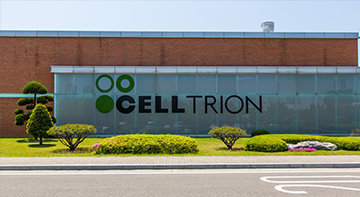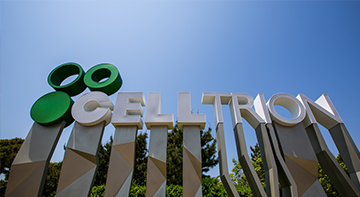Media Center
Press Release Latest Post Banner Type
Press Release Latest Post Banner Type
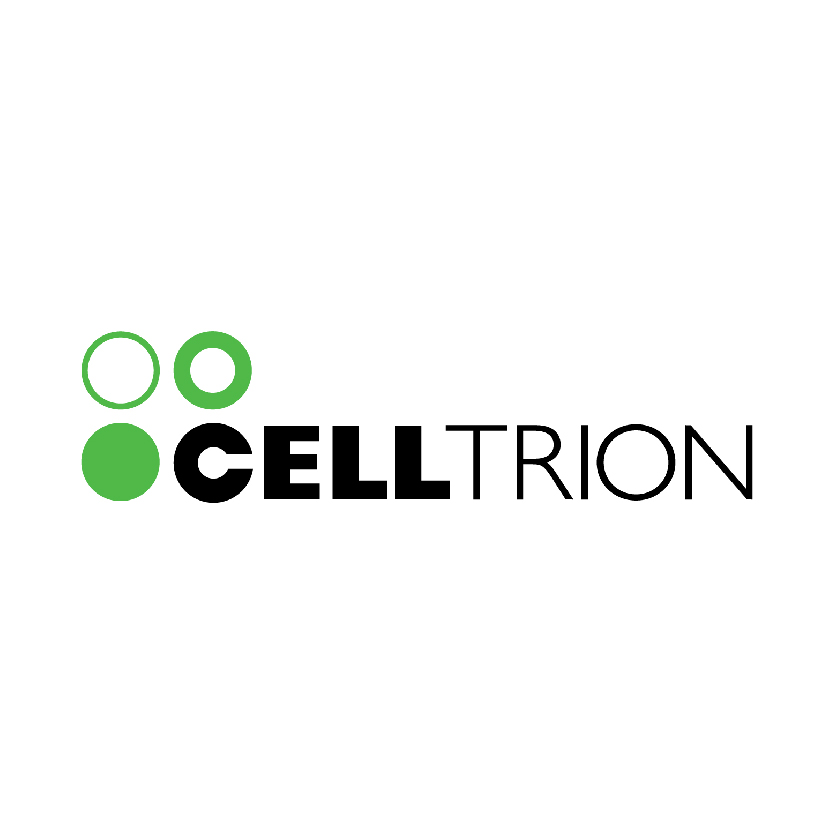
Celltrion receives positive CHMP Opinion for SteQeyma™ (ustekinumab biosimilar) autoinjector
2025.12.18SteQeyma™ 45mg and 90mg solution for injection via autoinjector (pre-filled pen) receives positive CHMP opinion, which will facilitate subcutaneous administration in patients with plaque psoriasis, psoriatic arthritis (PsA) and Crohn’s disease (CD)1The new autoinjector option increases convenience, enhances individual patient experience and expands administration options INCHEON, South Korea--(BUSINESS WIRE)--Celltrion, Inc. today announced that the Committee for Medicinal Products for Human Use (CHMP) of the European Medicines Agency (EMA) has adopted a positive opinion of autoinjector of SteQeyma™, a biosimilar to Stelara® (ustekinumab), for the treatment of plaque psoriasis, psoriatic arthritis (PsA) and Crohn’s disease (CD). The positive CHMP opinion is for SteQeyma autoinjector in 45mg/0.5mL and 90mg/1mL, expanding the currently approved SteQeyma™ presentation, which includes 45mg/0.5mL, 90mg/1mL in a pre-filled syringe and 45mg/0.5mL in a vial for subcutaneous injection, as well as 130mg/26mL concentrate for solution for intravenous infusion. “The new SteQeyma™ autoinjector brings together convenience and practical usability to meet the everyday challenges faced by patients living with chronic inflammatory diseases. The full range of our SteQeyma™ dosage forms and strengths, with the autoinjector now added, provides patients and healthcare professionals with more individualized treatment options that support ease of use and improve adherence,” said Taehun Ha, Senior Vice President and Head of Europe Division at Celltrion. “This marks an important milestone in strengthening Celltrion’s immunology portfolio and reaffirms our pioneering leadership in the global biosimilar sector, as we remain committed to reducing the healthcare burden, improving patients’ quality of life, and enhancing the overall patient experience.” With this new addition, SteQeyma™ broadens the administration option, giving patients and physicians access to a complete range of administration options. The new SteQeyma™ autoinjector enables patients and caregivers to administer the medicine via a simple two-step process. The device includes two clear visual and audible indicators - a viewing window and audible clicks to support patients easily identify the injection status, which guide patients with successful administration. SteQeyma™ autoinjector is citrate-free with special thin-wall needle technology to help reduce injection pain. It also offers a 4-year shelf life and can be re-refrigerated, helping reduce product disposal. SteQeyma™ is currently licensed in more than 40 countries worldwide, including the US, Japan and EU countries. Alongside Remsima™ SC, a subcutaneous formulation of infliximab approved in the EU, SteQeyma™ joins Celltrion’s distinguished portfolio that includes Remsima™ (biosimilar infliximab), Truxima™ (biosimilar rituximab), Herzuma™ (biosimilar trastuzumab), Yuflyma™ (biosimilar adalimumab), Vegzelma™ (biosimilar bevacizumab), Omlyclo™ (biosimilar omalizumab), Avtozma™ (tocilizumab biosimilar), Osenvelt/Stoboclo™ (biosimilar denosumab), Eydenzelt™ (biosimilar aflibercept) and Remsima™ (biosimilar infliximab) IV liquid formulation. Notes to Editors: About SteQeyma™ (CT-P43, biosimilar ustekinumab)1SteQeyma™, formerly known as CT-P43, is a human IL-12 and IL-23 antagonist indicated for multiple immune-mediated diseases. SteQeyma™ is available in both subcutaneous and intravenous formulations. The subcutaneous injection comes in two strengths: 45mg/0.5 mL or 90mg/1 mL solution in a prefilled syringe and prefilled pen, as well as 45mg/0.5mL in a vial. The intravenous infusion is provided as a 130mg/26 mL (5mg/mL) solution in a vial. SteQeyma™ will be available as an autoinjector in 45mg/0.5mL and 90mg/1mL.1 For plaque psoriasis and psoriatic arthritis, SteQeyma™ is administered at 45mg subcutaneous initially, followed by a 45mg dose 4 weeks later, and then every 12 weeks thereafter. For Crohn’s disease, the first dose is administered intravenously, followed by 90mg subcutaneous dose at week 8, and then every 12 weeks thereafter. About Celltrion, Inc.Celltrion is a leading biopharmaceutical company that specializes in researching, developing, manufacturing, marketing and sales of innovative therapeutics that improve people's lives worldwide. Celltrion is a pioneer in the biosimilar space, having launched the world's first monoclonal antibody biosimilar. Our global pharmaceutical portfolio addresses a range of therapeutic areas including immunology, oncology, haematology, ophthalmology and endocrinology. Built on trust through our fully integrated capabilities – from advanced R&D and in-house manufacturing to a reliable global supply network – we continue moving toward innovation as we work to ensure consistent availability of affordable, trusted, and high-quality biologics for patients and healthcare systems across Europe.For more information, please visit our website www.celltrion.com/en-us and stay updated with our latest news and events on our social media - LinkedIn, Instagram, X, and Facebook. FORWARD-LOOKING STATEMENTCertain information set forth in this press release contains statements related to our future business and financial performance and future events or developments involving Celltrion Inc. and its subsidiaries that may constitute forward-looking statements, under pertinent securities laws. This press release contains forward looking statements. These statements may be also identified by words such as "prepares", "hopes to", "upcoming", "plans to", "aims to", "to be launched", "is preparing", "once gained", "could", "with the aim of", "may", "once identified", "will", "working towards", "is due", "become available", "has potential to", “anticipates”, the negative of these words or such other variations thereon or comparable terminology. In addition, our representatives may make oral forward-looking statements. Such statements are based on the current expectations and certain assumptions of Celltrion Inc. and its subsidiaries' management, of which many are beyond its control. Forward-looking statements are provided to allow potential investors the opportunity to understand management’s beliefs and opinions in respect of the future so that they may use such beliefs and opinions as one factor in evaluating an investment. These statements are not guarantees of future performance and undue reliance should not be placed on them. Such forward-looking statements necessarily involve known and unknown risks and uncertainties, which may cause actual performance and financial results in future periods to differ materially from any projections of future performance or results expressed or implied by such forward-looking statements. Celltrion, Inc. and its subsidiaries undertake no obligation to update forward-looking statements if circumstances or management’s estimates or opinions should change except as required by applicable securities laws. References1 European Medicines Agency. Summary of Product Characteristics (SmPC), SteQeyma. [Last Accessed December 2025]
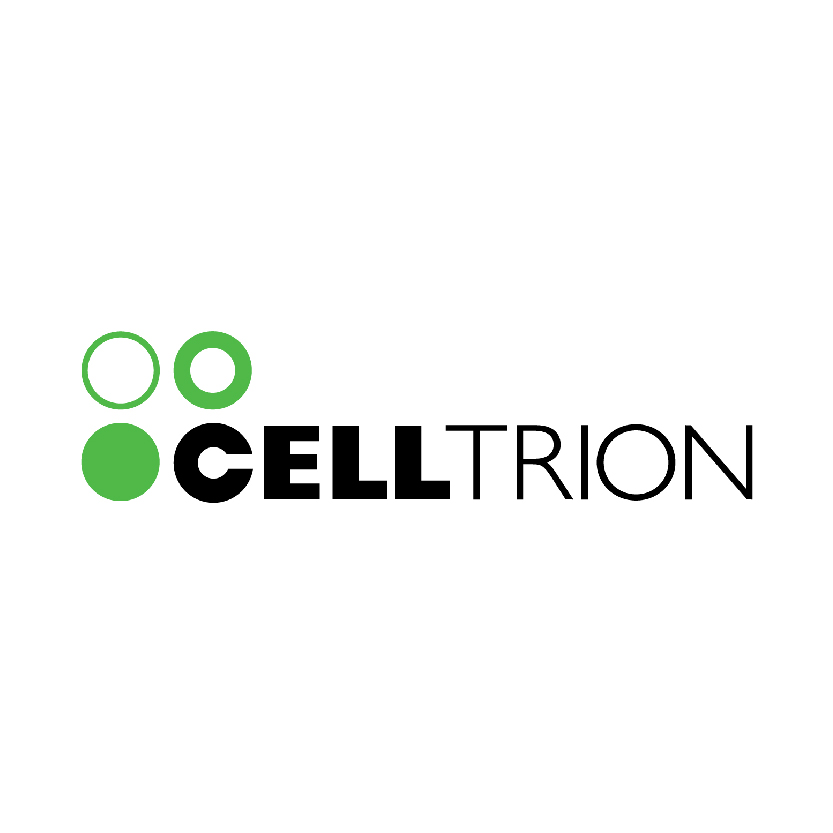
Celltrion announces U.S. FDA approval of 300mg strength of OMLYCLO® (omalizumab-igec), the first and only FDA-approved interchangeable biosimilar to XOLAIR®
2025.12.03FDA approval of OMLYCLO® (omalizumab-igec) 300 mg/2 mL solution in a single-dose prefilled syringe for subcutaneous injection expands dosing flexibility and supports tailored treatment for individual patients with certain allergic diseasesOMLYCLO® (omalizumab-igec) is the first and only biosimilar designated as interchangeable with XOLAIR® (omalizumab); The FDA previously approved OMLYCLO® 75 mg/0.5 mL and 150 mg/mL in a single-dose prefilled syringe for subcutaneous injection in March 2025 INCHEON, South Korea, Dec. 1, 2025 -- Celltrion, Inc. today announced the U.S. Food and Drug Administration (FDA) has approved a new presentation of OMLYCLO® (omalizumab-igec), the first and only biosimilar designated as interchangeable with XOLAIR® (omalizumab), in a 300mg/2mL solution in a single-dose prefilled syringe for subcutaneous injection. In the U.S., OMLYCLO will be marketed and distributed exclusively by Celltrion USA, Inc. In March 2025, the FDA approved OMLYCLO in 75 mg/0.5 mL and 150 mg/mL solutions in a single-dose prefilled syringe for subcutaneous injection for the treatment of moderate to severe persistent asthma, chronic rhinosinusitis with nasal polyps (CRSwNP), Immunoglobulin E (IgE)-mediated food allergy, and chronic spontaneous urticaria (CSU).[1] "The approval of the additional 300 mg presentation of OMLYCO underscores our dedication to patients in the U.S., by broadening treatment choices and expanding flexibility, addressing diverse needs of patients with allergic and inflammatory conditions," said Dr. Juby Jacob-Nara, Senior Vice President and Chief Medical Officer at Celltrion USA. "The new dosing option of OMLYCLO can help reduce the number of required injections and ease the overall treatment burden and discomfort for patients with these diseases." "We are proud of the expansion of OMLYCLO's dosing options, marking another significant milestone in our commitment to increasing access to biologic treatments in the U.S.," said Thomas Nusbickel, Chief Commercial Officer at Celltrion USA. "We remain steadfast in our efforts to support physicians with flexible, high-quality treatment options and ensure that more patients can benefit from best-in-class care." ### About OMLYCLO® (omalizumab-igec) OMLYCLO® (omalizumab-igec) is the first U.S. Food and Drug Administration (FDA)-approved anti-IgE antibody biosimilar referencing XOLAIR® (omalizumab). OMLYCLO 75 mg/0.5 mL, 150 mg/mL and 300 mg/2mL solutions in a single-dose prefilled syringe is approved as interchangeable with the reference product for all indications based on comprehensive data and clinical evidence confirming the therapeutic equivalence to XOLAIR.[1] OMLYCLO was approved by the U.S. Food and Drug Administration (FDA) and the European Commission (EC) in March 2025 and May 2024, respectively. INDICATIONOMLYCLO® (omalizumab-igec) injection, is an anti-IgE antibody indicated for: Moderate to severe persistent asthma in adults and pediatric patients ≥6 years of age with a positive skin test or in vitro reactivity to a perennial aeroallergen and symptoms that are inadequately controlled with inhaled corticosteroidsChronic rhinosinusitis with nasal polyps (CRSwNP) in adult patients ≥18 years of age with inadequate response to nasal corticosteroids, as add-on maintenance treatmentIgE-mediated food allergy in adult and pediatric patients aged ≥1 year age for the reduction of allergic reactions (Type I), including anaphylaxis, that may occur with accidental exposure to one or more foods. To be used in conjunction with food allergen avoidanceChronic spontaneous urticaria (CSU) in adults and adolescents ≥12 years of age who remain symptomatic despite H1 antihistamine treatmentLimitations of Use: Not indicated for: acute bronchospasm or status asthmaticus; emergency treatment of allergic reactions, including anaphylaxis; other forms of urticaria. IMPORTANT SAFETY INFORMATION WARNING: ANAPHYLAXIS Anaphylaxis presenting as bronchospasm, hypotension, syncope, urticaria, and/or angioedema of the throat or tongue, has been reported to occur after administration of omalizumab products. Anaphylaxis has occurred as early as after the first dose of omalizumab products, but also has occurred beyond 1 year after beginning regularly administered treatment. Because of the risk of anaphylaxis, initiate OMLYCLO therapy in a healthcare setting and closely observe patients for an appropriate period of time after OMLYCLO administration.Health care providers administering OMLYCLO should be prepared to manage anaphylaxis which can be life-threatening. Inform patients of the signs and symptoms of anaphylaxis and instruct them to seek immediate medical care should symptoms occur. Selection of patients for self-administration of OMLYCLO should be based on criteria to mitigate risk from anaphylaxis. Contraindications: Severe hypersensitivity reaction to omalizumab products or any ingredient of OMLYCLO. Anaphylaxis. Omalizumab products, including OMLYCLO, have been associated with anaphylaxis, reported in both clinical trials and postmarketing data. Patients with a history of anaphylaxis to foods, medications, or other causes face an increased risk. Initiate OMLYCLO only in a healthcare setting with anaphylaxis management capabilities. Patients should be monitored for an appropriate period post-administration, informed of signs and symptoms of anaphylaxis, and instructed to seek immediate medical care if they occur. Malignancy. Malignancies have been observed in clinical studies, with various cancer types reported. The long-term risk, especially in high-risk groups, is unknown. Acute Asthma Symptoms and Deteriorating Disease. Omalizumab products have not been shown to alleviate asthma exacerbations acutely. Do not use OMLYCLO to treat acute bronchospasm or status asthmaticus. Corticosteroid Reduction. Do not discontinue systemic or inhaled corticosteroids abruptly upon initiation of OMLYCLO therapy for asthma or CRSwNP. Eosinophilic Conditions. Be alert to eosinophilia, vasculitic rash, worsening pulmonary symptoms, cardiac complications, and/or neuropathy, especially upon reduction of oral corticosteroids. Fever, Arthralgia, and Rash. Stop OMLYCLO if a patient develops a constellation of signs and symptoms, including arthritis/arthralgia, rash, fever, and lymphadenopathy. Parasitic (Helminth) Infection. Monitor patients at high risk of geohelminth infection while on OMLYCLO therapy. Laboratory Tests. Administration of omalizumab products increases serum total IgE due to drug:IgE complexes. Do not use serum total IgE levels within one year of discontinuation of omalizumab products to reassess dosing regimen, as they may not reflect steady-state free IgE. Potential Medication Error Related to Emergency Treatment of Anaphylaxis. OMLYCLO should not be used for the emergency treatment of allergic reactions, including anaphylaxis. Instruct patients that OMLYCLO is for maintenance use to reduce allergic reactions, including anaphylaxis, while avoiding food allergens. Most Common Adverse ReactionsAsthma: In patients ≥12 years, reported in ≥1%: arthralgia, general pain, leg pain, fatigue, dizziness, fracture, arm pain, pruritus, dermatitis, and earache. In pediatric patients (6 to <12 years), reported in ≥3%: nasopharyngitis, headache, pyrexia, upper abdominal pain, streptococcal pharyngitis, otitis media, viral gastroenteritis, arthropod bites, and epistaxis.CRSwNP: In patients ≥3% of adults: headache, injection site reactions, arthralgia, upper abdominal pain, and dizziness.IgE-Mediated Food Allergy: In ≥3% of patients: injection site reactions and pyrexia.CSU: In ≥2% of patients: nausea, nasopharyngitis, sinusitis, upper respiratory tract infections (viral and non-viral), arthralgia, headache, and cough. For more information, see Full Prescribing Information. About CelltrionCelltrion is a leading biopharmaceutical company that specializes in researching, developing, manufacturing, marketing and sales of innovative therapeutics that improve people's lives worldwide. Celltrion is a pioneer in the biosimilar space, having launched the world's first monoclonal antibody biosimilar. Our global pharmaceutical portfolio addresses a range of therapeutic areas including immunology, oncology, hematology, ophthalmology and endocrinology. Beyond biosimilar products, we are committed to advancing our pipeline with novel drugs to push the boundaries of scientific innovation and deliver quality medicines. For more information, please visit our website www.celltrion.com/en-us. and stay updated with our latest news and events on our social media: LinkedIn, Instagram, X, and Facebook. About Celltrion USACelltrion USA is Celltrion's U.S. subsidiary established in 2018. Headquartered in New Jersey, Celltrion USA is committed to expanding access to innovative biologics to improve care for U.S. patients. Celltrion's FDA-approved biosimilar products in immunology, oncology, hematology, endocrinology and ophthalmology include: INFLECTRA® (infliximab-dyyb), TRUXIMA® (rituximab-abbs), HERZUMA® (trastuzumab-pkrb), VEGZELMA® (bevacizumab-adcd), YUFLYMA®(adalimumab-aaty), AVTOZMA® (tocilizumab-anho), STEQEYMA® (ustekinumab-stba) STOBOCLO® (denosumab-bmwo), OSENVELT® (denosumab-bmwo), OMLYCLO® (omalizumab-igec), and EYDENZELT® (aflibercept-boav), as well as the novel biologic ZYMFENTRA® (infliximab-dyyb). Celltrion USA will continue to leverage Celltrion's unique heritage in biotechnology, supply chain excellence and best-in-class sales capabilities to improve access to high-quality biopharmaceuticals for U.S. patients. For more information, please visit www.celltrionusa.com and stay updated with our latest news and events on our social media - LinkedIn. FORWARD-LOOKING STATEMENTCertain information set forth in this press release contains statements related to our future business and financial performance and future events or developments involving Celltrion Inc. and its subsidiaries that may constitute forward-looking statements, under pertinent securities laws. These statements may be also identified by words such as "prepares", "hopes to", "upcoming", "plans to", "aims to", "to be launched", "is preparing", "once gained", "could", "with the aim of", "may", "once identified", "will", "working towards", "is due", "become available", "has potential to", the negative of these words or such other variations thereon or comparable terminology. In addition, our representatives may make oral forward-looking statements. Such statements are based on the current expectations and certain assumptions of Celltrion Inc. and its subsidiaries' management, of which many are beyond its control.Forward-looking statements are provided to allow potential investors the opportunity to understand management's beliefs and opinions in respect to the future so that they may use such beliefs and opinions as one factor in evaluating an investment. These statements are not guarantees of future performance and undue reliance should not be placed on them. Such forward-looking statements necessarily involve known and unknown risks and uncertainties associated with the company's business, including the risk factors disclosed in its Annual Report and/or Quarterly Reports, which may cause actual performance and financial results in future periods to differ materially from any projections of future performance or results expressed or implied by such statements. Celltrion Inc. and its subsidiaries undertake no obligation to update forward-looking statements if circumstances or management's estimates or opinions should change except as required by applicable securities laws. TrademarksOMLYCLO® is a registered trademark of CELLTRION, Inc.XOLAIR® is a registered trademark of Novartis AG. References[1] OMLYCLO U.S. prescribing information (2025)
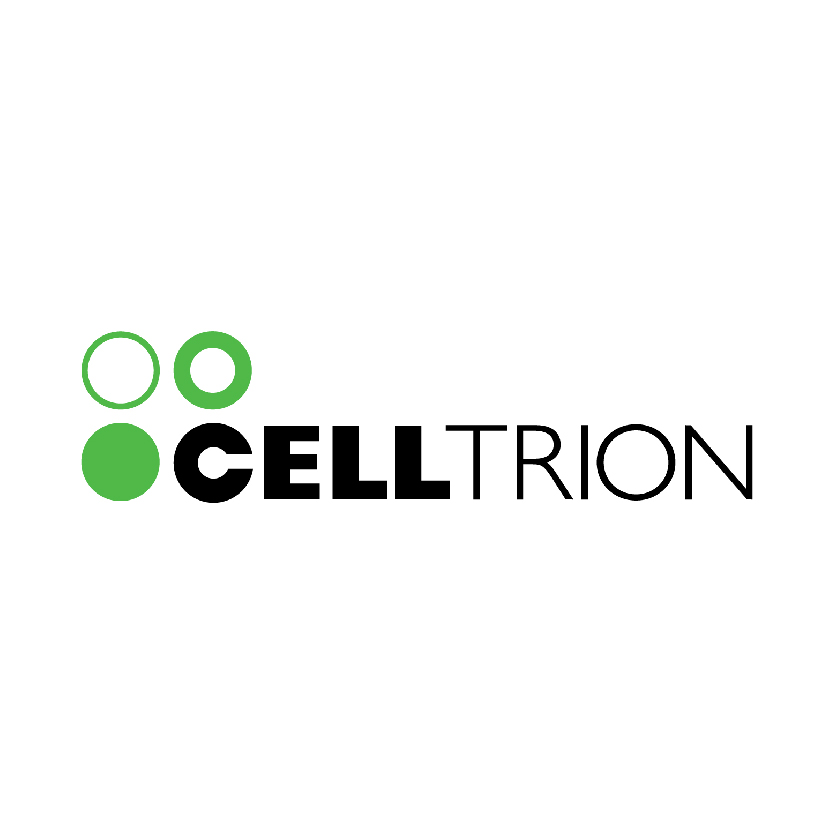
Celltrion announces publication of post-hoc analysis of LIBERTY-CD study of ZYMFENTRA® (infliximab-dyyb), indicating consistent efficacy across disease location, including the terminal ileum in Clinical Gastroenterology and Hepatology journal
2025.11.26Findings from the post-hoc analysis of LIBERTY-CD study indicates efficacy of ZYMFENTRA® (subcutaneous infliximab) regardless of disease location, consistent across ileum-dominant and colon-dominant Crohn's disease (CD)Findings support the therapeutic potential of ZYMFENTRA in addressing persistent treatment gaps especially in ileum-dominant CD INCHEON, South Korea, Nov. 26, 2025 /PRNewswire/ -- Celltrion, Inc. today announced that a post-hoc analysis of the LIBERTY-CD study, which showed that the efficacy of ZYMFENTRA® (infliximab-dyyb) is consistent regardless of disease location, has been published in a peer reviewed journal, Clinical Gastroenterology and Hepatology.[1] "The consistency of treatment effect across disease locations is important, as ileal Crohn's disease (CD) is highly correlated with negative long-term outcomes and the fact that the terminal ileum being the most challenging segment to treat," said Prof. Jean-Frédéric Colombel, MD, Janowitz Division of Gastroenterology, Icahn School of Medicine at Mount Sinai. "The consistent clinical and endoscopic outcomes observed with subcutaneous formulation of infliximab, regardless of disease location, suggest its potential as an effective therapy across different ileocolonic segments." The post hoc analysis utilized the endoscopic data from the phase 3 LIBERTY-CD trial of subcutaneous formulation of infliximab (infliximab SC), ZYMFENTRA, to investigate the clinical outcomes and related predictive factors by disease location in patients with moderately-to-severely active CD who received infliximab SC maintenance treatment. Among 329 patients, 52.6% had colon-dominant CD (n=173) and 47.4% had ileum-dominant CD (n=105). At Week 54, patients receiving infliximab SC achieved significantly greater efficacy outcomes across all endpoints compared with placebo, regardless of disease location. Rates of clinical remission were 60.95% in the ileum-dominant group and 66.95% in the colon-dominant group, versus 37.25% and 29.09%, respectively, in the placebo group. Clinical response and endoscopic response rates similarly favored infliximab SC over placebo in both location groups (clinical response: 62.86% vs 41.18% in ileum-dominant and 67.80% vs 38.18% in colon-dominant; endoscopic response: 53.33% vs 19.61% in ileum-dominant and 52.54% vs 18.18% in colon dominant). When assessed at the segment level, endoscopic responses at Week 54 were greater with infliximab SC versus placebo across all ileocolonic segments, including the terminal ileum, with consistent treatment effect sizes observed throughout each segment. "As 70-80% of patients with Crohn's disease have ileal involvement at diagnosis, effective treatment of the ileum has the potential to benefit a large proportion of patients with Crohn's disease," said Nam Lee, Vice President of Global Medical Affairs at Celltrion. "It is encouraging to have this additional analysis that supports consistent efficacy of subcutaneous infliximab regardless of different disease location and segments." The full manuscript "Endoscopic response to subcutaneous infliximab by disease location: A post hoc analysis of the LIBERTY-CD study" is available online at Clinical Gastroenterology and Hepatology today. Notes to Editors: About ZYMFENTRA® (infliximab-dyyb; subcutaneous infliximab)ZYMFENTRA® (infliximab-dyyb) is a prescription medicine used as an injection under the skin (subcutaneous injection) by adults for the maintenance treatment of moderately-to-severely active ulcerative colitis following treatment with an infliximab product given by intravenous infusion (IV), Moderately-to-severely active Crohn's disease following treatment with an infliximab product given by intravenous infusion (IV). ZYMFENTRA blocks the action of tumor necrosis factor-alpha (TNF-alpha), a protein that can be overproduced in response to certain diseases and cause the immune system to attack normal, healthy parts of the body.ZYMFENTRA was approved by the FDA through the Biologics License Application (BLA) under the 351 (a) pathway of the Public Health Service Act (a "stand-alone" BLA). ZYMFENTRA is considered a new biologic with a first-approved subcutaneous administration form and thus will be under patent protection for its dosage form by 2037 and for its route of administration by 2040. Indication and Important Safety InformationZYMFENTRA® is a prescription medicine indicated in adults for maintenance treatment of:Moderately-to-severely active Crohn's disease following treatment with an infliximab product administered intravenously.Moderately-to-severely active ulcerative colitis following treatment with an infliximab product administered intravenously.It is not known if ZYMFENTRA is safe and effective in children under 18 years of age.What is the most important information I should know about ZYMFENTRA? SERIOUS INFECTIONSPatients treated with ZYMFENTRA are at increased risk for developing serious infections involving various organ systems and sites that may lead to hospitalization or death. Discontinue ZYMFENTRA if a patient develops a serious infection or sepsis. Reported infections include:Active tuberculosis (TB), including reactivation of latent TB. Patients frequently presented with disseminated or extrapulmonary disease. Patients should be tested for latent TB before and during treatment with ZYMFENTRA. Treatment for latent infection should be initiated prior to treatment with ZYMFENTRA.Invasive fungal infections, including histoplasmosis, coccidioidomycosis, candidiasis, aspergillosis, blastomycosis, and pneumocystosis. Patients may present with disseminated, rather than localized, disease. Empiric anti-fungal therapy should be considered in patients at risk for invasive fungal infections who develop severe systemic illness.Bacterial, viral, and other infections due to opportunistic pathogens, including Legionella and Listeria. The risks and benefits of treatment with ZYMFENTRA should be carefully considered prior to initiating therapy in patients with chronic or recurrent infection. Closely monitor patients for the development of signs and symptoms of infection during and after treatment with ZYMFENTRA, including the possible development of TB in patients who tested negative for latent TB infection prior to initiating therapy.Risk of infection may be higher in patients greater than 65 years of age, patients with comorbid conditions and/or patients taking concomitant immunosuppressant therapy. In clinical trials, other serious infections observed in patients treated with infliximab included arthritis bacterial, pneumonia, and urinary tract infection. MALIGNANCIESMalignancies, some fatal, have been reported in children, adolescents, and young adults treated with TNF blockers, including infliximab products.Approximately half of these cases were lymphomas, including Hodgkin's and non-Hodgkin's lymphoma. The other cases represented a variety of malignancies, including rare malignancies that are usually associated with immunosuppression and malignancies that are not usually observed in children and adolescents. The malignancies occurred after a median of 30 months after the first dose of therapy. Most of the patients were receiving concomitant immunosuppressants.Post-marketing cases of hepatosplenic T-cell lymphoma, a rare type of T-cell lymphoma, have been reported in patients treated with TNF blockers, including infliximab products. These cases have had a very aggressive disease course and have been fatal. The majority of reported cases have occurred in patients with Crohn's disease or ulcerative colitis, and most were in adolescent and young adult males. Almost all of these patients had received treatment with azathioprine or 6-mercaptopurine concomitantly with a TNF blocker at or prior to diagnosis. Carefully assess the risks and benefits of treatment with ZYMFENTRA, especially in these patient types. In clinical trials of all TNF blockers, more cases of malignancies were observed compared with controls and the expected rate in the general population. In clinical trials of some TNF blockers, including infliximab products, more cases of other malignancies were observed compared with controls. As the potential role of TNF blocker therapy in the development of malignancies is not known, caution should be exercised when considering treatment of patients with a current or a past history of malignancy.Melanoma and Merkel cell carcinoma have been reported in patients treated with TNF blocker therapy, including infliximab products. Periodic skin examination is recommended for all patients, particularly those with risk factors for skin cancer. CONTRAINDICATIONSZYMFENTRA is contraindicated in patients with a previous severe hypersensitivity reaction to infliximab-dyyb, other infliximab products, any of the inactive ingredients of ZYMFENTRA or any murine proteins (severe hypersensitivity reactions have included anaphylaxis, hypotension and serum sickness). HEPATITIS B VIRUS REACTIVATIONTNF blockers, including infliximab products, have been associated with reactivation of hepatitis B virus (HBV) in patients who are chronic carriers. Some cases were fatal. Patients should be tested for HBV infection before initiating ZYMFENTRA. For patients who test positive, consult a physician with expertise in the treatment of hepatitis B. Exercise caution when prescribing ZYMFENTRA for patients identified as carriers of HBV and monitor closely for active HBV infection during and following termination of therapy with ZYMFENTRA. Discontinue ZYMFENTRA in patients who develop HBV reactivation and initiate antiviral therapy with appropriate supportive treatment. Exercise caution when considering resumption of ZYMFENTRA and monitor patients closely. HEPATOTOXICITYHepatobiliary disorders, including acute liver failure, jaundice abnormal hepatic function, hepatic steatosis, hepatitis, hepatotoxicity, hyperbilirubinemia and non-alcoholic fatty liver, have been reported in patients receiving infliximab products post-marketing. Some cases were fatal or required liver transplant. Aminotransferase elevations were not noted prior to discovery of liver injury in many cases. Patients with symptoms or signs of liver dysfunction should be evaluated for evidence of liver injury. If jaundice and/or marked liver enzyme elevations (eg, ≥5 times the upper limit of normal) develop, ZYMFENTRA should be discontinued and a thorough investigation of the abnormality should be undertaken. CONGESTIVE HEART FAILURECases of worsening congestive heart failure (CHF) and new onset CHF have been reported with TNF blockers. Some cases had a fatal outcome. In several exploratory trials of other TNF blockers in the treatment of CHF, there were greater proportions of TNF-blocker-treated patients who had CHF exacerbations requiring hospitalization or increased mortality. ZYMFENTRA has not been studied in patients with a history of CHF and ZYMFENTRA should be used with caution in patients with CHF. HEMATOLOGIC REACTIONCases of leukopenia, neutropenia, thrombocytopenia and pancytopenia (some fatal) have been reported. The causal relationship to infliximab-product therapy remains unclear. Exercise caution in patients who have ongoing or a history of significant hematologic abnormalities. Advise patients to seek immediate medical attention if they develop signs and symptoms of blood dyscrasias or infection. Consider discontinuation of ZYMFENTRA in patients who develop significant hematologic abnormalities. HYPERSENSITIVITY AND OTHER ADMINISTRATION REACTIONSIn post-marketing experience, serious systemic hypersensitivity reactions (including anaphylaxis, hypotension and serum sickness) have been reported following administration of infliximab products. If an anaphylactic or other clinically significant hypersensitivity reaction occurs, institute appropriate therapy and discontinue ZYMFENTRA. INJECTION SITE REACTIONSIn clinical studies, localized injection-site reactions were reported following administration of ZYMFENTRA. If a clinically significant injection-site reaction occurs, institute appropriate therapy and discontinue ZYMFENTRA. NEUROLOGIC REACTIONSAgents that inhibit TNF have been associated with central nervous system (CNS) manifestation of systemic vasculitis, seizure and new onset or exacerbation of CNS demyelinating disorders, including multiple sclerosis and optic neuritis and peripheral demyelinating disorders, including Guillain-Barré syndrome. Exercise caution when considering ZYMFENTRA in patients with these disorders and consider discontinuation if these disorders develop. RISK OF INFECTION WITH CONCURRENT ADMINISTRATION OF OTHER BIOLOGICS PRODUCTSSerious infections and neutropenia have been reported with concurrent use of ZYMFENTRA with other immunosuppressive biological products. The concurrent use of ZYMFENTRA with other immunosuppressive biological products used to treat UC and CD may increase the risk of infection and is not recommended. RISK OF ADDITIVE IMMUNOSUPPRESSIVE EFFECTS FROM PRIOR BIOLOGICAL PRODUCTSConsider the half-life and mode of action of prior biological products to avoid unintended additive immunosuppressive effects when initiating ZYMFENTRA. AUTOIMMUNITYTreatment with TNF blockers may result in the formation of autoantibodies and in the development of a lupus-like syndrome. Discontinue ZYMFENTRA treatment if symptoms of a lupus-like syndrome develop. VACCINATIONS AND USE OF LIVE VACCINES/THERAPEUTIC INFECTIOUS AGENTSPrior to initiating ZYMFENTRA, update vaccinations in accordance with current vaccination guidelines. Live vaccines or therapeutic infectious agents should not be given with ZYMFENTRA due to the possibility of clinical infections, including disseminated infections. At least a 6-month waiting period following birth is recommended before the administration of any live vaccine to infants exposed in utero to ZYMFENTRA. ADVERSE REACTIONSIn clinical trials with ZYMFENTRA, the most common adverse reactions occurring in ≥3% of ZYMFENTRA-treated patients included site reactions, COVID-19, anemia, arthralgia, infection site reaction, increased alanine aminotransferase and abdominal pain for UC, and COVID-19, headache, upper respiratory tract infection, injection site reaction, diarrhea, increased blood creatine phosphokinase, arthralgia, increased alanine aminotransferase, hypertension, urinary tract infection, neutropenia, dizziness and leukopenia for CD.Please click for Full U.S. Prescribing Information. Globally, prescribing information varies; refer to the individual country product label for complete information. About Celltrion, Inc.Celltrion is a leading biopharmaceutical company that specializes in researching, developing, manufacturing, marketing and sales of innovative therapeutics that improve people's lives worldwide. Celltrion is a pioneer in the biosimilar space, having launched the world's first monoclonal antibody biosimilar. Our global pharmaceutical portfolio addresses a range of therapeutic areas including immunology, oncology, hematology, ophthalmology and endocrinology. Beyond biosimilar products, we are committed to advancing our pipeline with novel drugs to push the boundaries of scientific innovation and deliver quality medicines. For more information, please visit our website https://www.celltrion.com/en-us. and stay updated with our latest news and events on our social media: LinkedIn, Instagram, X, and Facebook. About Celltrion USACelltrion USA is Celltrion's U.S. subsidiary established in 2018. Headquartered in New Jersey, Celltrion USA is committed to expanding access to innovative biologics to improve care for U.S. patients. Celltrion's FDA-approved biosimilar products in immunology, oncology, hematology, and endocrinology include: INFLECTRA® (infliximab-dyyb), TRUXIMA® (rituximab-abbs), HERZUMA® (trastuzumab-pkrb), VEGZELMA® (bevacizumab-adcd), YUFLYMA®(adalimumab-aaty), AVTOZMA® (tocilizumab-anho), STEQEYMA® (ustekinumab-stba), STOBOCLO® (denosumab-bmwo), OSENVELT® (denosumab-bmwo), OMLYCLO® (omalizumab-igec), and EYDENZELT® (aflibercept-boav) as well as the novel biologic ZYMFENTRA® (infliximab-dyyb).Celltrion USA will continue to leverage Celltrion's unique heritage in biotechnology, supply chain excellence and best-in-class sales capabilities to improve access to high-quality biopharmaceuticals for U.S. patients. For more information, please visit www.celltrionusa.com and stay updated with our latest news and events on our social media: LinkedIn. FORWARD-LOOKING STATEMENTCertain information set forth in this press release contains statements related to our future business and financial performance and future events or developments involving Celltrion, Inc. and its subsidiaries that may constitute forward-looking statements under pertinent securities laws. This press release contains forward looking statements. These statements may be also identified by words such as "prepares", "hopes to", "upcoming", "plans to", "aims to", "to be launched", "is preparing", "once gained", "could", "with the aim of", "may", "once identified", "will", "working towards", "is due", "become available", "has potential to", "anticipate" the negative of these words or such other variations thereon or comparable terminology.In addition, our representatives may make oral forward-looking statements. Such statements are based on the current expectations and certain assumptions of Celltrion, Inc. and its subsidiaries' management, of which many are beyond its control.Forward-looking statements are provided to allow potential investors the opportunity to understand management's beliefs and opinions in respect of the future so that they may use such beliefs and opinions as one factor in evaluating an investment. These statements are not guarantees of future performance and undue reliance should not be placed on them.Such forward-looking statements necessarily involve known and unknown risks and uncertainties associated with the company's business, including the risk factors disclosed in its Annual Report and/or Quarterly Reports, which may cause actual performance and financial results in future periods to differ materially from any projections of future performance or results expressed or implied by such statements.Celltrion, Inc. and its subsidiaries undertake no obligation to update forward-looking statements if circumstances or management's estimates or opinions should change except as required by applicable securities laws. References[1] Bruce E. Sands et al., Endoscopic response to subcutaneous infliximab by disease location: A post hoc analysis of the LIBERTY-CD study. Clinical Gastroenterology and Hepatology. 2025.
Press Releases
PR Video
Magazine

Biopharmaceuticals, derived from biological sources such as proteins and antibodies, are more susceptible to external factors than chemically synthesized drugs or general commercial products. Accordingly, biopharmaceuticals require verifiable systems that ensure efficacy and quality not only during production but also throughout the entire logistics process, including storage and transport.
Brochure
Learn more about Celltrion through our brochure.

